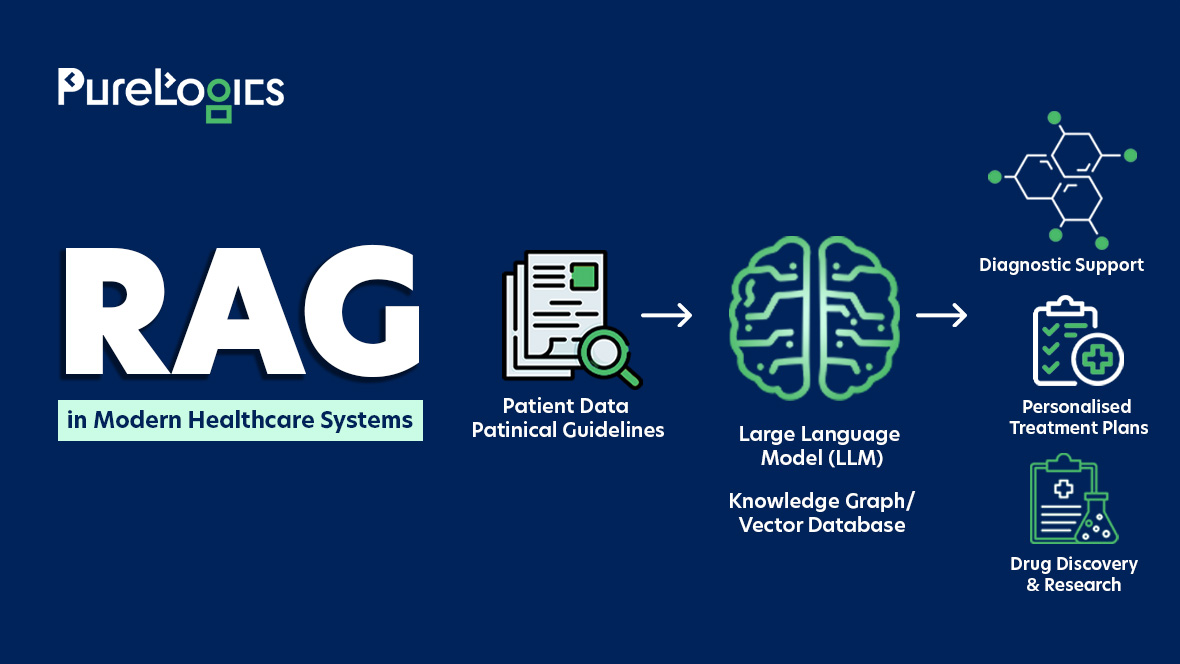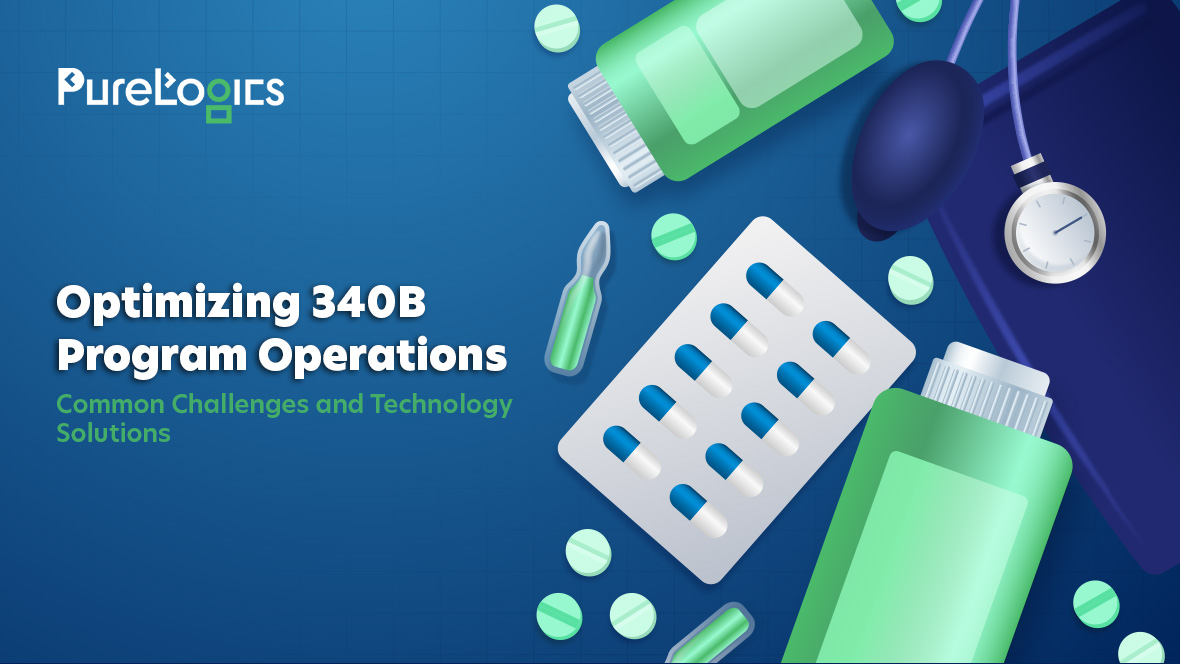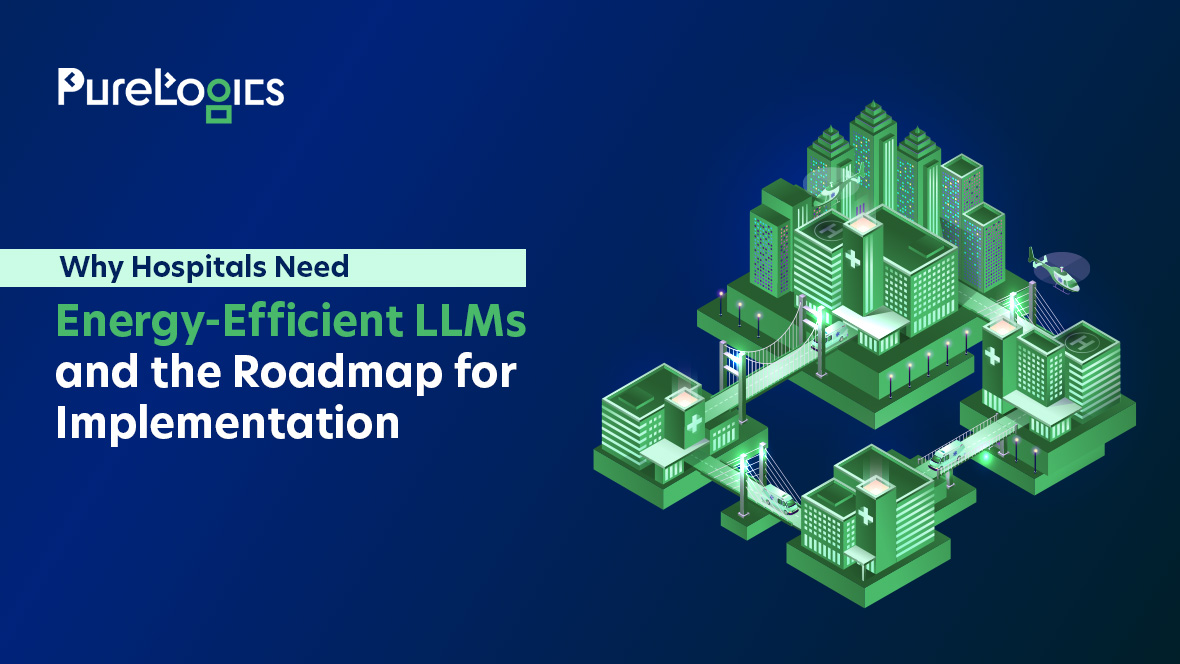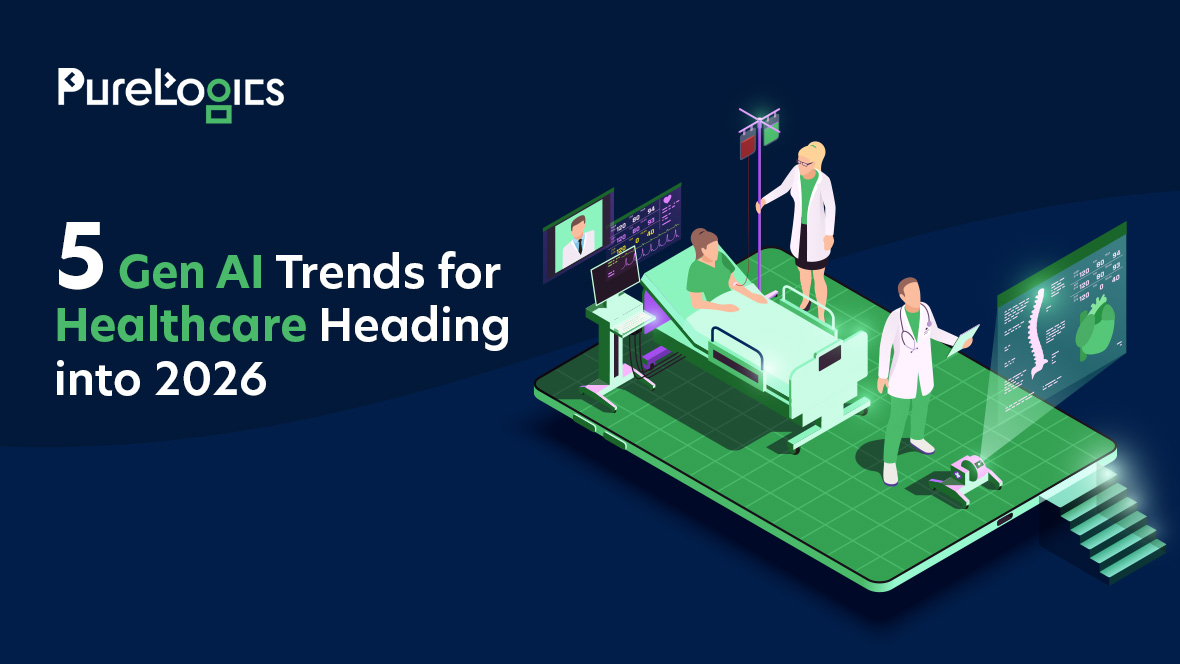Dr. Sarah begins her morning rounds at City General Hospital, her tablet displaying all the necessary information, such as real-time patient vitals, predictive alerts, and personalized treatment recommendations. All of this is possible due to the widespread application of data analytics & BI in healthcare. So, what once took hours now happens in seconds, allowing her to focus on patient care. This is just one application of data analytics and BI; other areas where it serves well include resource allocation and cost projections.
Additionally, medical data is expected to continue growing, reaching 10,000 exabytes this year (L.E.K Consulting), and the ability to extract meaningful insights is not only advantageous but also necessary. In this blog, we will discuss data analytics and BI, their types, and how they are transforming healthcare for the better, bringing increased efficiency.
What is Data Analytics & BI in Healthcare Delivery?
Healthcare systems are currently facing intense pressure to enhance patient outcomes, minimize costs, and personalize care. To meet these demands, healthcare organizations need more innovative and data-driven strategies. Two of the most robust tools that can help boost the efficiency of healthcare systems are data analytics and business intelligence (BI). These tools, when used together, can help healthcare providers analyze patterns, track performance, transition from reactive to proactive care, and make more informed decisions based on clinical and operational data. That’s why the data analytics and BI market is on an upward trajectory.
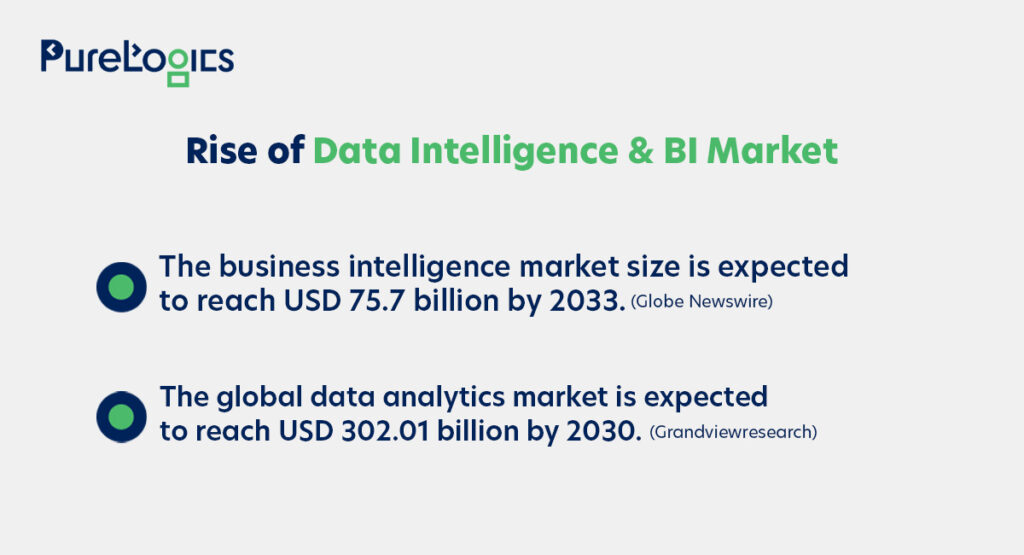
All in all, data analytics & BI in healthcare are no longer optional but a necessity, whether it is about predicting patient health or enhancing appointment scheduling, among other applications.
Although these approaches are often considered the same, they serve distinct purposes, so let us define and explain the differences between them.
What is Data Analytics in Healthcare?
It can be defined as the process of analyzing patterns to gain insights into patient health data, enabling better decisions regarding patients’ healthcare. It helps healthcare professionals reduce costs and improve the overall efficiency of healthcare services.
Furthermore, physicians, by studying the large amount of administrative and financial data, can detect anomalies, spot patterns, and make wise decisions. Contrary to popular belief, data analytics is not just about gathering data, but about making sense of it so that effective, efficient, and personalized healthcare demands can be met.
What is BI in Healthcare?
Business Intelligence (BI) in healthcare is the use of tools and technologies that gather, organize, and visualize healthcare data. It can turn raw data into meaningful information by presenting it in dashboards, charts, and reports, helping healthcare providers to make informed decisions. Additionally, making it better for hospitals and clinics to:
- Track performance
- Monitor patient outcomes
- Manage day-to-day operations
- Highlight areas of improvement
- Know real-time trends
BI also helps minimize waiting times, enhance staff scheduling, and monitor treatment success rates. All in all, with BI, the healthcare staff can act quickly and efficiently to improve patient care and operational efficiency.
Although data analytics & BI in healthcare are closely related, they are distinct fields of study. The BI is all about helping the users see what is going on, and data analytics enables you to understand why and what to do about it. We know that this can be confusing, but we’ll explain the difference between them.
Data Analytics vs BI in Healthcare
BI or business intelligence explains the strategies and tools used to gather business information. Whereas data analytics is the technical process that can help obtain actionable insights from raw data.
| Metrics | Business Intelligence (BI) | Data Analytics |
| Analysis Types | Descriptive | Diagnostic, predictive, and prescriptive |
Tools | Dashboards, reports, and scoreboards | Machine learning, data mining, and statistical models |
| Complexity | Low to moderate | Moderate to high |
Focus | What happened | Why did it happen? What can be done?What will happen? |
| Main goal | Monitor performance | Explore patterns, Predict trends |
Use Cases in Healthcare | Tracking KPIs Monitor the use of resources Report infection rates | Analysis of treatment results, Predict staffing needs, Prediction of readmission rates |
In short, the BI provides a clear picture of past and current performance, whereas data analytics delves deeper to explain the patterns that predict future outcomes. Both have different applications, helping healthcare providers find the hidden patterns that can improve their operations.
Data analytics and BI in healthcare uncover insights that assist hospitals and clinics in streamlining their operations and improving overall care delivery. Data is treasure, and if it can be used to save patient lives, then it is better to utilize it smartly and efficiently.
Types of Data Analytics & BI in Healthcare
Data analytics and BI are used in different ways in healthcare, which helps in improving the overall performance and decision-making. These approaches have enabled hospitals to enhance patient outcomes and effectively manage resources. Indeed, they have revolutionized healthcare by enabling providers to gain clearer insights, which in turn allows them to respond efficiently, plan better, and deliver personalized care. Let us define the types of data analytics first.
Data Analytics Types
Healthcare data analytics encompasses four main types, each serving a distinct purpose within the healthcare system.
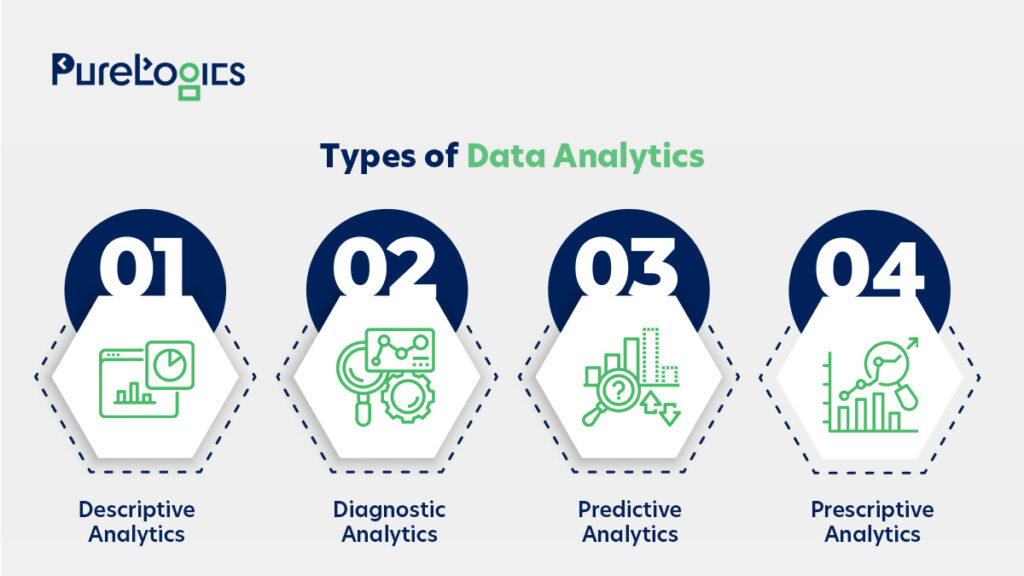
- Descriptive Analytics: This involves analyzing historical data, which entails examining patient medical records and treatment histories to identify patterns and trends. For instance, a hospital might use descriptive analytics to detect the most common reasons for patient admission or monitor infection in different departments.
- Diagnostic Analytics: It identifies the reasons behind patient outcomes or operational issues by analyzing past data. It helps in finding the root or underlying cause of the issue or problem, for instance, why a treatment failed.
- Predictive Analytics: It uses data, statistical algorithms, and machine learning techniques to predict future outcomes. With predictive analytics, patients can analyze past data to predict future needs and potential disease outbreaks. For instance, this type of analytics can help hospitals predict which patients are most likely to develop chronic conditions based on their health records.
- Prescriptive Analytics: This is useful in recommending the best course of treatment for a patient by analyzing their current health status and identifying potential risks. Physicians primarily study cases from similar patients to make informed decisions about resource allocation, treatment, and patient care.
Data analytics & BI in healthcare serve different purposes, but in some areas, they overlap. However, BI has proven quite helpful in healthcare in recent years, whether it is in clinical decision-making, operational tasks, or adherence to compliance norms. This can help improve their practices and ensure better health outcomes.
Business Analytics (BI) Types
The different types of BI are given below:
- Financial BI: BI can help the healthcare organization in analyzing the economic data for better budgeting. It can reduce costs and increase returns.
- Operational BI: It enhances daily operations by utilizing real-time data, improving scheduling, inventory control, and overall efficiency.
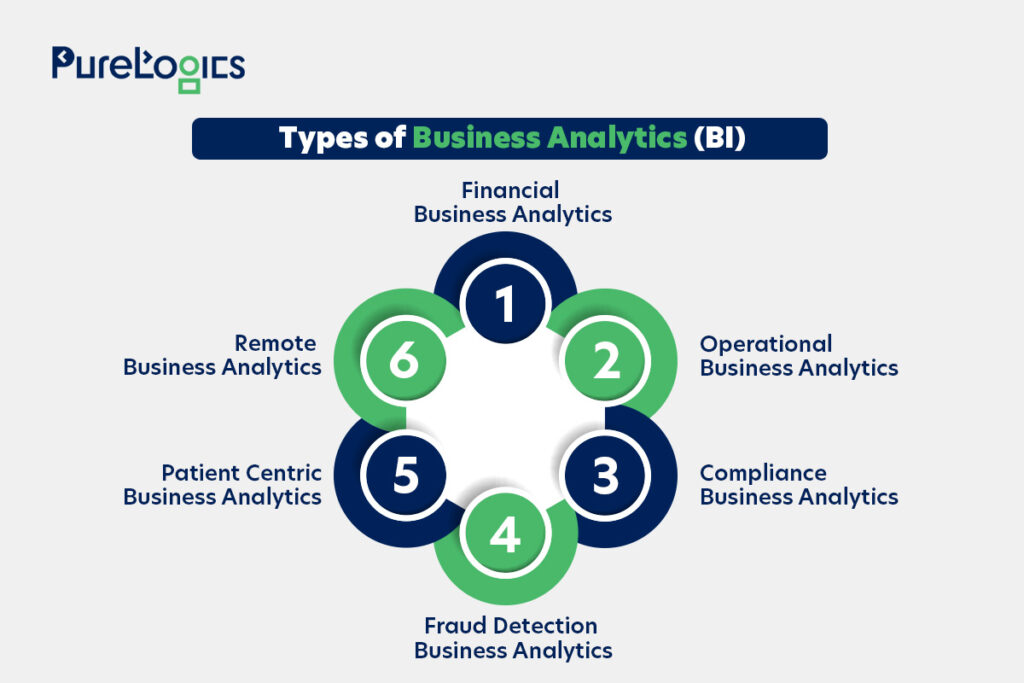
- Compliance BI: It assists the healthcare providers in ensuring compliance with healthcare data protection regulations (HIPAA and GDPR, etc). It monitors the audit logs, tracks security methods such as MFA or authorization access, and supports regulatory reporting.
- Fraud Detection BI: Tracks any anomaly in billing or other operations to detect fraud or operational risks. This helps hospitals minimize issues related to misuse, overbilling, and insurance scams.
- Patient-Centric BI: This enables the analysis of patient data, facilitating personalized treatments and promoting better patient engagement.
- Remote BI: It evaluates telehealth performance and patient outcomes to support virtual care and remote monitoring.
The healthcare big data analytics market is projected to reach $327.57 billion by 2034, indicating that data-driven care is the future of healthcare. This growth is because of the range of technologies that make data analytics and BI robust.
Technologies Used in Data Analytics & BI in Healthcare
The healthcare sector now relies on modern technologies to collect, store, and analyze data. Some of the popular tools that are helping in data analytics and BI are given below:
Data Integration
- Microsoft Fabric
- Azure Data Factory
- Apache Kafka
- Apache Airflow
- Talend
- Oracle Data Integrator
- Matillion
- Axlaiban
- Informatica
- Panoply
- Apache NiFi
- IBM DataStage
Cloud Data Storage
- Microsoft Fabric
- Azure Cosmos DB
- Azure Blob Storage
- Azure SQL Database
- Amazon DynamoDB
- Amazon Redshift
- MongoDB
Data Warehouse Technologies
- SQL Server
- Microsoft Fabric
- Azure Synapse Analytics
- Amazon Redshift
- Amazon RDS
- Google BigQuery
- Oracle Exadata / BigQuery
- Snowflake
- PostgreSQL
- Teradata
Data Visualization
- Power BI
- Microsoft Fabric
- SQL Server Reporting Services (SSRS)
- Microsoft Excel
- Tableau
- Grafana
- Chartist.js
- FusionCharts
- Datawrapper
- Infogram
- ChartBlocks
- Oracle Business Intelligence
- MicroStrategy
- QlikView
- Kyubit
Cloud Services
- Amazon Web Services (AWS)
- Microsoft Azure
- Google Cloud Platform (GCP)
Indeed, the technologies used in data analytics and BI serve as the backbone for more competent healthcare. With these tools, healthcare providers can extract insights from the raw data, making healthcare more efficient. Let us tell you more about how they are both changing healthcare for the better.
How are Data Analytics & BI Transforming Healthcare?
Data analytics & BI in healthcare convert the vast amounts of patient and operational data into actionable insights. This helps healthcare providers improve clinical outcomes, reduce costs, and enhance efficiency. Below are some ways they are enhancing healthcare.
Uses of Business Intelligence (BI)
BI in healthcare helps visualize data and track KPIs for enhanced patient care. Some of the other uses of BI are given below.
- Health Analytics: Analyzing patient data helps establish the correlation between care services and health outcomes, thereby enhancing patient experiences.
- Health Management: BI analyzes data from various resources to identify trends, risk factors, and opportunities for intervention or improvement. This helps enhance the overall health of patients.
- Optimization of Resources: Both are helpful in efficient resource allocation, meaning they use the organization’s data to optimize staffing levels and redistribute workload.
- Fraud detection: BI helps healthcare providers in processing data from various sources to detect fraud related to insurance or healthcare system abuse.
- Supply Chain Management: The management of hospitals can be an arduous task, and BI, by analyzing inventory, purchasing, and distribution data, can optimize supply to help hospitals reduce costs.
- Clinical Trial Management: BI can help track and assess data from clinical trials to enhance efficiency, leading to more accurate trial outcomes.
While BI provides a clear and visual understanding of healthcare operations, helping healthcare providers make sense of their data. So, let us explain what data analytics can do.
Uses of Data Analytics
It helps uncover patterns in large datasets, predict risks, improve diagnostics, and facilitates other uses, which make it beneficial for healthcare providers. Some of these uses are listed below.
- Care Coordination: Predictive analytics enhances care coordination by identifying patients at high risk of complications, enabling more targeted interventions. This allows care teams to identify and intervene early, developing a personalized plan for each patient.
- Patient Engagement: Data analytics helps enhance patient engagement by providing personalized health insights and reminders based on patients’ data. It enables providers to understand patient behavior and track adherence to treatment plans.
- Resource Allocation: Like BI, data analytics also plays a significant role in resource allocation, as it helps track and record resources efficiently.
The current uses of data analytics & BI in healthcare are changing the industry for the better. However, with the evolution of technology, the future of data analytics and BI holds far greater potential.
Future of Data Analytics and BI in Healthcare
The future of data analytics & BI in healthcare is bright because there is a high demand for personalized care, which requires valuable insights. Moreover, integrating AI and machine learning will help increase efficiency and reduce costs. Below are some of the emerging trends:
- Their integration across the EHRs, wearables, and healthcare systems will make data more actionable.
- AI-based predictive analytics and automation will enable proactive care management.
- Self-service business intelligence tools will help analyze and act on data without much dependence on IT teams.
- BI systems integrated with IoT devices and wearable technology will offer a holistic view of patient health.
While data analytics and BI are revolutionizing the healthcare sector, their implementation is not without hurdles. Here are the key obstacles you can face when adopting these technologies.
Challenges in the Implementation of BI & Data Analytics in Healthcare
The implementation of data analytics & BI in healthcare can be complex. Some of the challenges you can come across are data integration, privacy concerns, and high costs, and let us tell you more:
Data Silos
Healthcare data is stored across multiple systems, including EHRs, billing platforms, and lab systems. These systems don’t necessarily communicate with each other, and this fragmentation of data further complicates the integration of data for a comprehensive view. To mitigate this challenge effectively, proper interoperability is required, as without it, data analytics & BI in healthcare can only offer partial insights.
Security & Privacy Concerns
Healthcare ecosystems contain sensitive patient data, and the protection of this data is mandatory under data protection regulations (e.g., HIPAA). Moreover, the implementation of analytics tools means accessing large amounts of data, which can increase the risk of data leak or breach. However, measures such as encryption and access control can help safeguard the data.
Resistance
Many companies might not consider this, but the healthcare sector still depends on legacy systems. Implementing BI dashboards and analytics tools can be time-consuming and challenging. Moreover, change management and user training can help users learn these new approaches and leverage their benefits.
Lack of Skilled Workforce
Indeed, the industry right now lacks professionals who understand both healthcare and advanced analytics. It can be difficult for organizations to find and hire staff, and this delay can lead to increased implementation challenges and reduced value of analytics. But you can hire a trusted healthcare software development company that offers BI and data analytics services.
Implementation Costs
Providers need significant amounts of investment for the effective implementation of data analytics & BI in healthcare. This can be particularly challenging for hospitals or clinics, and ongoing maintenance can further increase the associated costs. However, this investment is worthwhile, as it enables you to predict patient disease in advance, allowing you to create a personalized plan that leads to increased patient satisfaction and higher revenue.
Your Partner in BI and Healthcare Analytics – PureLogics
Indeed, data is the future of healthcare, and having data alone is not just enough. Without a structure and analysis, it holds little value; however, when used correctly, it can help your staff improve patient care and enhance performance. At PureLogics, we convert raw data into actionable insights using the latest data science techniques, including population health methods and precision medicine analytics, along with Power BI tools such as ETL and EDW, to help healthcare providers make better and smarter decisions. With nearly 20 years of experience, we can help you leverage your data to serve your patients more effectively. So you can grow your impact and revenue. Book a consultation with our experts.
FAQs
What are the examples of business intelligence (BI) in healthcare?
BI or business intelligence converts the complex data into actionable insights to enhance the decision-making process. For instance, businesses can use BI dashboards to track patient flow, staff performance, and bed occupancy. It can also monitor key metrics such as treatment effectiveness, financial performance, and readmission rates.
What are the five tenets of healthcare business intelligence?
The five tenets of healthcare BI not only encourage reporting but also facilitate smarter and informed decision-making.
- Data quality
- Leadership and sponsorship
- Technology and architecture
- Value
- Culture Change
High-quality data is the backbone of BI, and these tenets help improve both immediate and long-term performance.
What does a BI developer do in healthcare?
The BI developer helps in the design and development of data solutions that enable healthcare providers to make informed decisions. They create dashboards and data models to track key metrics, including patient outcomes, resource allocation, and financial performance. Additionally, they integrate data from sources like EHRs, labs, and billing systems to ensure accurate insights.
How much does it cost to implement BI & data analytics in healthcare?
The cost can range from $100,000 to $1,250,000; however, you can decrease the long-term cost by implementing the project in phases, focusing on high-impact areas first.


 [tta_listen_btn]
[tta_listen_btn]
 July 10 2025
July 10 2025


